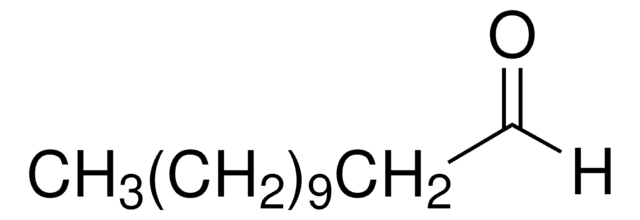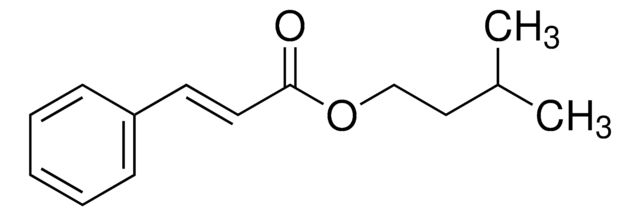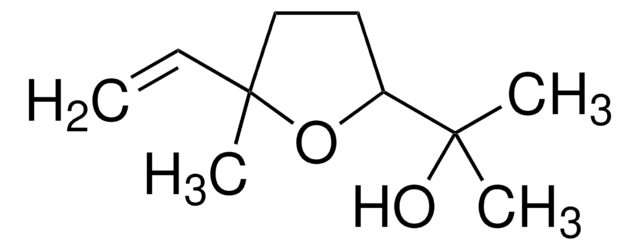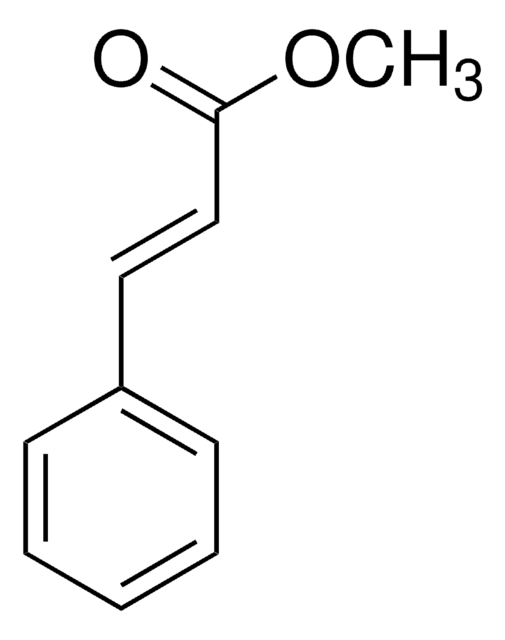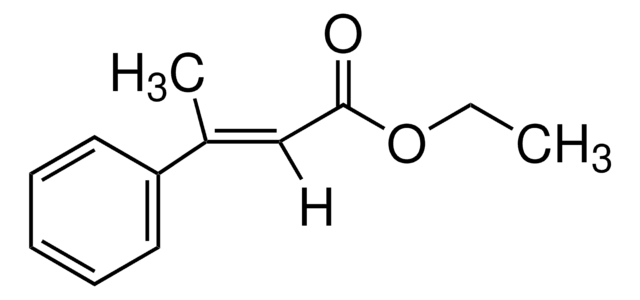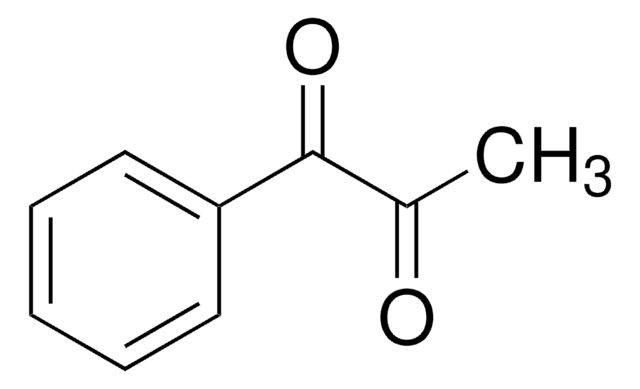W293903
Isopropyl cinnamate
≥96%, FG
Synonym(s):
Isopropyl 3-phenylpropenoate
Sign Into View Organizational & Contract Pricing
Select a Size
All Photos(1)
Select a Size
Change View
About This Item
Linear Formula:
C6H5CH=CHCO2CH(CH3)2
CAS Number:
Molecular Weight:
190.24
FEMA Number:
2939
EC Number:
Council of Europe no.:
325
MDL number:
UNSPSC Code:
12164502
PubChem Substance ID:
Flavis number:
9.732
NACRES:
NA.21
grade:
FG
Halal
Kosher
Halal
Kosher
biological source:
synthetic
food allergen:
no known allergens
Recommended Products
biological source
synthetic
Quality Level
grade
FG
Halal
Kosher
reg. compliance
EU Regulation 1334/2008 & 178/2002
FDA 21 CFR 172.515
Assay
≥96%
refractive index
n20/D 1.546 (lit.)
bp
273 °C (lit.)
density
1.02 g/mL at 25 °C (lit.)
application(s)
flavors and fragrances
Documentation
see Safety & Documentation for available documents
Looking for similar products? Visit Product Comparison Guide
General description
Isopropyl cinnamate can be used as a flavoring and fragrance ingredient. It is one of the key constituents of the essential oil of Fortunella crassifolia peel.
Application
Isopropyl cinnamate can be used as a perfuming agent in cosmetics and as a flavoring ingredient in food industries.
Storage Class Code
10 - Combustible liquids
WGK
WGK 2
Flash Point(F)
230.0 °F - closed cup
Flash Point(C)
110 °C - closed cup
Personal Protective Equipment
dust mask type N95 (US), Eyeshields, Gloves
Choose from one of the most recent versions:
Already Own This Product?
Find documentation for the products that you have recently purchased in the Document Library.
Chemical composition and antimicrobial activity of the essential oil of Kumquat (Fortunella crassifolia Swingle) Peel.
Wang YW, et al.
International Journal of Molecular Sciences, 13(3), 3382-3393 (2012)
Inhibition of Anopheles gambiae odorant receptor function by mosquito repellents.
Tsitoura P, et al.
The Journal of Biological Chemistry, 290(12), 7961-7972 (2015)
Comparison of estimated daily intakes of flavouring substances with no-observed-effect levels
Munro IC and Danielewska-Nikiel B
Food And Chemical Toxicology, 44(6), 758-809 (2006)
Cinnamic acid derivatives in cosmetics: current use and future prospects
Gunia-Krzyzak A, et al.
International Journal of Cosmetic Science, 40(4), 356-366 (2018)
Structure?activity relationships of phenylpropanoids as antifeedants for the pine weevil Hylobius abietis.
Bohman B, et al.
Journal of Chemical Ecology, 34(3), 339-352 (2007)
Our team of scientists has experience in all areas of research including Life Science, Material Science, Chemical Synthesis, Chromatography, Analytical and many others.
Contact Technical Service